This is a special episode because I wanted to share with you a really well-received talk I gave at SuperfastBusiness Live in Sydney, where I reviewed some of the audience members’ websites and advised them on some SEO mistakes and low-hanging fruit.
Your site architecture, content and links form the foundation of your SEO. No one wants to build on a shaky foundation, right? Yet so many do, without realizing it. In this presentation, I went into some depth on each of these three pillars of SEO, as well as some of my favorite secret weapons. I got into the implications and nuances of duplicate content, thin content, improper tagging, and poor site speed. I recommended a number of tools for auditing and improving your site’s SEO.
If you’re frustrated by that black box known as Google’s ranking algorithm, you’ll definitely want to hear this highly actionable talk about SEO! Enjoy!
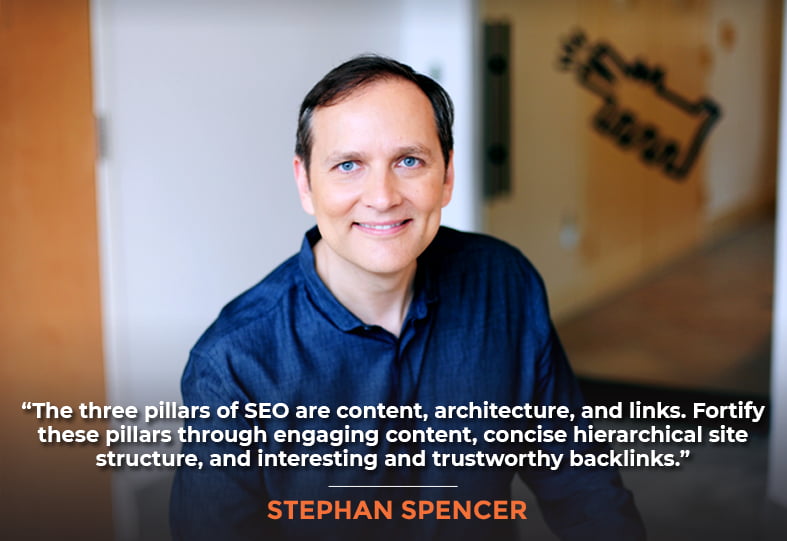
In This Episode
- [03:54] Stephan’s journey in optimizing himself.
- [09:52] The three pillars of SEO.
- [11:00] Stephan reviews some participants’ websites and explains the importance of title tags.
- [14:33] The benefits and opportunities of the meta description.
- [15:33] The implications of having duplicate content.
- [19:10] Technical SEO core issue: site speed. Here are the tools for checking page speed and some tips for improving your website’s performance.
- [26:19] Stephan discusses Google’s point-of-view when your website has broken images, broken links, and other mistakes.
- [32:40] The relationship between links and Google rankings algorithm.
- [37:19] What is negative SEO?
- [38:51] Link monitoring tools useful for removed, lost, or deleted links.
- [43:13] Here’s what you need for an effective content marketing strategy to get remarkable links.
- [51:31] Keyword brainstorming tools recommended by Stephan. Some are useful for topic clustering, keyword popularity ranking, and organic listing.
Tony Robbins said our next speaker is the best SEO expert in the world. So what do we think about that? I could say it, too. He’s great.
I’ve been referring people to Stephan Spencer for SEO for years. We’ve remained friends, he’s become a member of Silver Circle, and I get to speak with him regularly. I’ve seen the caliber of clients he deals with.
I’ve seen behind the scenes, like under the hood. What he does for clients, it’s next level, beyond my comprehension, and I used to run an SEO business. If you want the best of the best for SEO, he’s here right now. Welcome up to the stage, Stephan Spencer, all the way from the USA.
Thank you. Hey, everybody. How are you doing? We did talk ‘Tony Robbins’ just a minute ago.
First, I want everybody to stand up. We got a little lunch here, so we need to get the energy back moving. So here’s what we’re going to do. I learned this from my wife, who learned it from Naam Yoga. It’s a simple breathing exercise, and it is so energizing. You’re going to love it. Hopefully, you’ll use it every day.
Breathe in, and then hold it (tap, tap, tap, tap, tap), and then breathe out.
Now we’re going to breathe in a little more. That’s a little surprise. A little more. Do you feel a little buzz from that? Okay, one more time. A little more, oh, it feels so good. Okay, you can sit down. Who feels better after that? Isn’t that cool? It’s great exercise.
We’re going to talk about how to improve your sales with SEO. Search engine optimization is your secret weapon, which we’ll cover in this hour. I’ve got three books, you’ve seen two of them.
Search Engine Optimization (SEO) is your secret weapon to improve sales.
The big one has 1,000 pages. Another is called Google Power Search, which is about finding anything on Google—confidential business plans and Forrester research reports normally cost thousands of dollars. But they’re all at your fingertips if you know the right Google queries. I’ve even found credit card numbers and expiration dates like files of them with Google searches. But no, it’s not in the book.
Lastly, Social eCommerce is all about how to drive sales through social media. I didn’t bring any of that one, just this copy. If somebody wants it, you can wrestle it from me. Those are my three books. I don’t have enough copies for everybody. Still, I will give everybody a free digital copy of Google Power Search. I’ll give you my email at the end of the presentation because that one is now in the second edition.
O’Reilly gave me the rights back so I could do that, which is cool because we can distribute it widely. In the case of the other two books, I do not have the right to distribute them. Now, I like to optimize everything, not just websites and rankings, but also optimizing myself. So you can all benefit from some optimization strategies for your productivity and health.
Biohacking, for example, is optimization. Optimize yourself, not just your rankings. Here’s an example of that in action. This was me, believe it or not, 10 years ago. Okay, enough. I can’t take it anymore. Oh my God, right? Can you believe that was me?
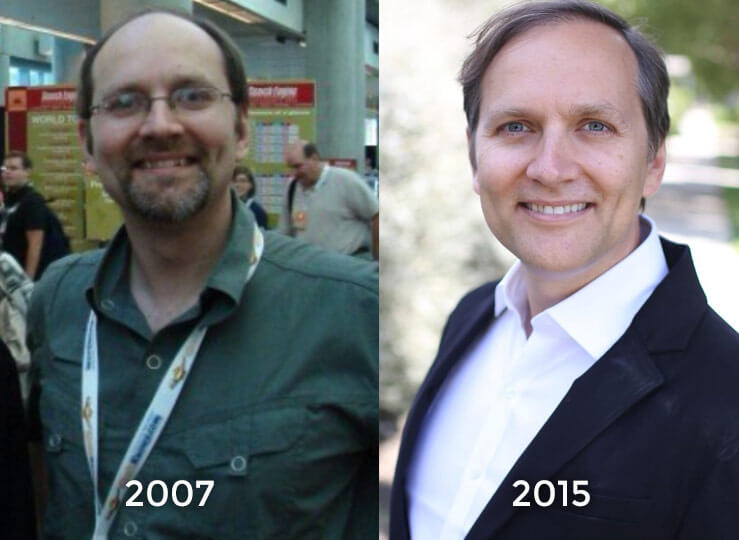
What happened? I went on a firewalk, not a figurative one, but a literal one in my bare feet at a Tony Robbins event called Unleash the Power Within. Isn’t that cool? I didn’t burn. I didn’t even get a blister. And I’m like, “if I can do that, I can certainly change my life. I can reboot myself.”
I changed my diet. I changed everything, including my workout regimen. I also got LASIK, and I got a hair transplant. But the internal changes were more significant than the external changes. For example, attending conferences where I’d speak a lot was fun, and they didn’t recognize me.
I’d just be hanging around with a big group of people. Nobody would know who I was. So they parade me around like, “this is Stephan Spencer.” That was fun.
A firewalk is so much more than a metaphor. It’s a reboot. Everybody who goes to Tony Robbins, Unleash the Power Within gets to do that firewalk, thousands and thousands of people. That was in 2009.
I like optimizing everything, not just websites and rankings but also myself.
In 2016, I married the woman of my dreams, my soulmate, whom I met at another Tony Robbins event. None of that would have been possible if I hadn’t taken that risk of taking my shoes and socks off and walking on the 2000-degree hot coals in my bare feet. You can optimize yourself and not just your rankings.
This whole process of my evolution inspired me to launch a podcast called Get Yourself Optimized. It was originally ‘The Optimized Geek,’ but I rebranded it on James’ advice. Thank you, James, because not everybody self-identifies as a geek.
I’ve had Dave Asprey on, the Bulletproof Coffee guy. I’ve had Dr. Daniel Amen, Change Your Brain, Change Your Life. It’s just amazing, amazing people on that podcast, Byron Katie, and so forth. Then I have a more relevant to this audience podcast called Marketing Speak, where I’ve had Jay Abraham, Dan Kennedy, and Seth Godin among some of the greats.
This presentation isn’t just about how to optimize for higher sales. Still, every day that goes by, you are leaving money on the table for your competitors to take because you are not optimizing your website. Your website is broken, and I will prove it to you. But don’t feel overwhelmed like you have to read a thousand-page book because you don’t.
If you don’t want to get overwhelmed, start with chapter seven on content marketing and link building. It’s a fun chapter. It’s not super technically dense, and it’s a good start. You don’t even have to crack that book open. You just need to think about SEO as core to your business.
The foundation of your website and your SEO are so critical.
I can’t, for example, not have a phone. I can’t just refuse to take phone calls. I need to be able to answer the phone, or somebody on the team needs to answer the phone. SEO is as important as a phone line. You do not neglect it, but you can treat it on a need-to-know basis. You don’t need to become an expert. You need to hire the right people and get it done. Otherwise, you leave money on the table. You essentially take a big pile of money and set it on fire daily, so please stop that.
You’ve heard in multiple presentations that frameworks are king. They’re so important that I will give you a framework, which is the three pillars of SEO. It’s content, architecture, and links..
We’re going to start with the architecture side, the technical stuff, which is all the technical geekery that serves as the foundation. The foundation of your website and your SEO are so critical. If it’s a shaky foundation, that’s not a great idea.
We want to ensure that we’re optimized and well-suited to rank for whatever keywords we’re chasing. I got some good news for you. I found you some money—free money. You need to get up and pick it up off the ground. That’s the free money, and we’ll start with one of the most straightforward technical SEO elements: title tags.
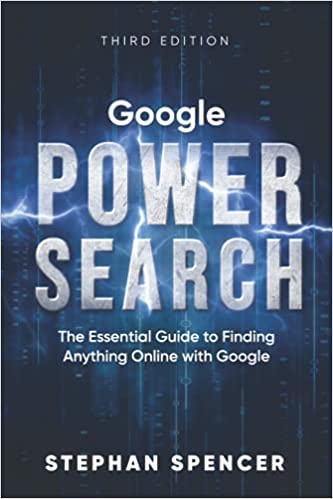
You may think, “title tags, well, surely we’ve got that right.” No, unfortunately, you don’t. I got a number of your websites incorporated into my presentation. Thank you to those who volunteered. You don’t know what you’re in for yet, but it will be good fun, and I’ll try to be gentle.
This is New Heights Media. Is New Heights Media in the audience? Is ranking for the keyword home important for your business? Let’s optimize the title tag for your most important page, the homepage of your website. That’s the most important page as far as Google is concerned.
It should not be Home, New Heights Media, but some keywords that relate to your business. It makes sense to start with the homepage. The title tag is the most important element on that page from an on-page SEO factor point of view. We worked our way down the site tree from the homepage, second-level to the tertiary-level pages, and so forth.
The homepage is not so powerful, lacking keywords and just the word ‘home.’ Then we have a blog, New Heights Media, for the blog homepage. ‘What we can do for you’ for the services page is not a great keyword. There are no keywords present. That’s easy.
Next, Romance Your Tribe. Romance Your Tribe, let’s try your podcast page. How about your books page? What books do you have? How many books do you have?
The title tag is the most important element on a page from an on-page SEO factor point of view.
Three books on some topics. These are great opportunities to make simple tweaks. Incorporate some keywords, like what topics your books are about.
Attract clients through online marketing. These are great keywords. We can confirm that and test that by actually using some keyword research tools. But we can then incorporate those keywords like online marketing books. For example, Romance Your Tribe would be a much better title. It takes all about 30 seconds to go in and tweak that. Pretty simple.
Here we have focusonforce.com. Let’s talk about your homepage title tag. It is focusonforce.com, Salesforce blog and resources. I need clarification because that’s not your blog homepage.
Your blog homepage has a title tag of just the word ‘blog’, which could be more keyword rich. And then your certification courses page has just certification courses. Those would be great keywords to incorporate into those title tags.
This is low-hanging fruit, folks. Here we have Horkey Handbook. So the horkeyhandbook.com homepage here is the Virtual Assistant Horkey Handbook. Targeting a more relevant keyword for your exact audience, like virtual assistant training or starting a virtual assistant business, is a better keyword to target.
There’s a great opportunity if it has a well-thought-out value proposition and call to action in the meta description.
Let’s now talk about meta descriptions. This one again is Romance Your Tribe. These are all blank meta descriptions. You might think, “well, meta descriptions, how important are those?” It’s a second-order activity. It’s not as important as titles, not by a long shot.
Meta descriptions don’t influence your rankings at all. So why would you do it? Why would you spend time on meta descriptions? Because you can influence the snippet displayed in the Google search listing and get more clicks.
If it says something like ‘Copyright 2019, All Rights Reserved,’ that’s not compelling. Whereas if it has a well-thought-out value proposition and call to action in the meta description, there’s a great opportunity, and you can create this uniquely for that particular page and do it on a page-by-page basis. Again, it’s starting at the homepage and working your way down. All of your top-level pages have no meta description. They’re blank—the same case here for Horkey Handbook.
Now, let’s move on to duplicate content. This is the bane of the technical SEO practitioners’ existence. Duplicate content is a real pain and is also related to thin content. ‘Thin content’ is where Google doesn’t see the page to be very useful or content-rich. You could get what feels like a penalty, but it’s more like you’re getting filtered.
Google wants diversity in the search results. If it’s showing many of the same search listings, what appears to be the same titles and the same snippets repeatedly, that’s not a great user experience for Google searchers. So Google wants to eliminate that as much as possible.
If you have a lot of duplicate content, you will be relegated to the depths of the search results. So you’ll get randomly chosen, maybe one of your pages or a competitor or a syndicating partner who has your same content might be the one who’s chosen, and everything else is relegated to deep in the search results.
Here we have duplicated home pages. This is Horkey Handbook again with a whole raft of pagination pages, but they’re not actual pagination pages. When you click on them, they all lead to the home page, duplicated home pages. You’re competing with yourself when you have duplicated home pages.
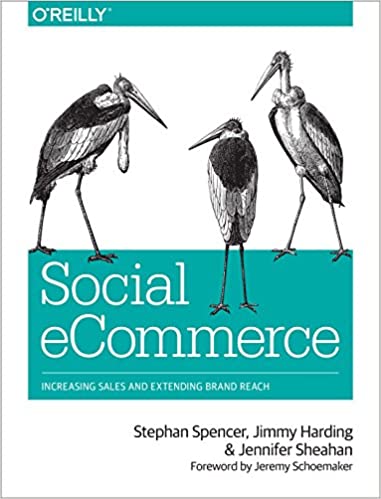
This happens so often that you’ll have, for example, www and non-www versions of your homepage. One doesn’t redirect to the other, so they resolve and compete. You have HTTPS, non-HTTPS, just HTTP, and they compete with each other. Or you have situations like this.
You can even have entire duplicated websites. Here’s an example of the Property Education Company. These are pages on the propertyedu.wpengine.com site, which is a staging site.
How did that happen? If you look at the homepage, you start navigating the top nav here under about. I moused over the about and the team. It shows that the link leads to that propertyedu.wpengine.com/teampage, not to propertyeducationcompany.com/teampage. So you’ve just exposed an entire staging site to Googlebot, and then you end up with dozens of pages.
By the way, on these pages in the index, some messages say there’s no information available about this page, ‘learn why.’ Have you ever seen search results like that? That happens when you have a Googlebot disallow directive in your robots.txt file, and you tell Googlebot, don’t come in here, don’t spider these pages. So you can still index them, keep them in your index and the results, but don’t have information about them.
That could be a better outcome. We often want to index the page rather than disallow it. It’s a little technical nuance. You want to remove the disallow from your robots.txt file and let Googlebot in to discover there’s a meta tag, a meta robot’s no index. Or better yet, consolidate all these duplicates together with a 301 redirect.
Another core issue for technical SEO is site speed. Check your site speed using free tools that advise on what to fix.
All right, now let’s talk about site speed, another core issue for technical SEO. Most of you have slow-loading websites. I hate to break it to you. It’s true. So many fabulous tools will, for free, check your site speed and advise you on what to fix.
For example, PageSpeed Insights. That’s a free tool from Google. Lighthouse, that’s another free tool from Google. That’s a Chrome extension. There’s also webpagetest.org and gtmetrics.com. Test My Site with google.com is another Google tool based on WebPageTest. So there are many options for checking your page speed and getting free tips on fixing it.
This example here is Romance Your Tribe again. The scary message that you see there is not good news. It took so long that this tool timed out trying to access your webpage. That’s an opportunity.
I checked with a different tool. This is WebPageTest. You see, you got an F for time to the first byte, which is not ideal, and also for caching. But here’s the kicker. If you look in that box that I highlighted in red, what is the page load time for the homepage? Over a minute and 69 seconds. Nobody’s going to wait around for that.
What’s that meme? Ain’t nobody got time for that. Have you seen that meme? I should have put it into the slides. Then you scroll down in this tool and see the waterfall graph.
Things that load in parallel will seem to load faster, and things that load serially on the page, like CSS files, JS files, and images. This is because some of it can load in parallel, and some must complete loading before the next thing can start loading. The waterfall graph shows where that happens, where things load in parallel and where things load serially.
It can be as simple as reordering the order of the JavaScript and the CSS files called in your HTML, and you’ve solved it. This is called the critical rendering path.
Here’s another site I’m going to pick on. This one is easydns.com. You’re in the business. You need to have a super fast-loading website. It’s not terrible. But if you look at the percentage of the total that the time to the first byte takes, it’s a huge percentage. So you’ve got some server performance issues, at least when I checked here with WebPageTest.
How did you fix it? There are two books that I’d start with. I didn’t write them, but they’re a fellow O’Reilly author. One is High Performance Web Sites, and the other is Even Faster Web Sites. They’re both published by O’Reilly. The author is Steve Souders, a big deal in the page performance or website performance space because he was originally the Chief Performance Engineer at Yahoo.
Images are often missed opportunities. They’re bloated and very heavy when you’re not using lazy loading.
He created YSlow while he was there. Then, when he got poached by Google and started working at Google, he created the first version of PageSpeed Insights. He’s amazing. You could start with those two books, but you could hire a PageSpeed performance engineer to come and optimize your servers.
Okay. This is internetmarketingstart.com. I’m spending too much time on this side, so I will come over here. Here’s the bad news. You’re an eight out of 100 on this tool, which is Google’s PageSpeed Insights tool. An opportunity to improve your performance. A lot of it has to do with images. Images are often missed opportunities. They’re bloated and very heavy. You’re not using lazy loading.
This is all advice you got for free from Google, saying to start using lazy loading so that images that are not visible on the screen don’t load until you start scrolling. Making your images much more efficient and not so heavy will make a big impact.
Here we have Focus on Force with a 1 out of 100. Okay, that’s an opportunity for sure. Then we have New Heights Media, 6 out of 100. Horkey Handbook, 33 out of 100. We’re getting better, but this is still in the red zone.
I use a tool called Screaming Frog, which is a spidering tool. Screaming Frog SEO Spider, it’s free for up to 500 URLs. If you have a small website with dozens of pages, you can use it totally for free. It’s a limited version. It doesn’t have all the bells and whistles, but you can accomplish much just with that free version. It’s sacrilege. It’s like a travesty if you don’t download it and run it on your website.
Here, we can see it’s telling us that so many images are slow loading because they’re really heavy. Some images are six megabytes. Holy cow, that’s crazy. Some images are multiple megabytes that are used multiple times on various pages of the website. That’s free money.
Here, we’re also using Screaming Frog on internetmarketingstart.com. Again, not quite as bad, but over a megabyte for an image could be better. There are images that you’re using multiple times. That one is eight times 300,000 and some. It could be a 10th of that just optimizing it.
Crawling issues are also discoverable with this tool. If you have, for example, 301 redirects in place. You’re having it go through a hop unnecessarily through a 301 redirect.
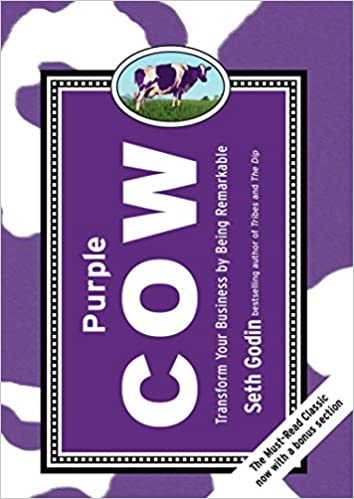
In this case here, it’s New Heights Media. It got 404 errors. And it happened because of a lack of a slash, an extra slash that shouldn’t have been there, or a lack of quotes. I don’t know. I didn’t look at the pages themselves, but they’re super simple errors that these are invalid URLs. You’re linking to them from your website, so it’s probably a 30-second fix to address this.
When you’re linking to pages that are broken, and they’re on your website, it’s like the broken windows principle. Who’s read the book The Tipping Point? Do you remember the broken windows that were in New York City? What they did was they addressed the graffiti, the broken windows in the neighborhood, and the turnstile jumping at the subway station stops, and all the violent crime went away.
What do you think Google thinks of your website when you have broken images, broken links, old copyright dates, errors, typos, and mistakes on your website? Like broken windows in the neighborhood, right? So stop it.
Here we have Horkey Handbook, and this is a site-wide issue. You guys went from HTTP to HTTPS—good job on that. However, you didn’t take that extra step of fixing all the links that point to HTTP on all your various pages. They should be pointing to HTTPS now.
You’re forcing every visitor clicking on a link on your site and every bot visit to go through a redirect hop unnecessarily. Simple search and replace, essentially, across the entire website. All the HTTP links should be switched to HTTPS.
Okay, here we have The Merrymaker Sisters. Do you want the program subdomain to be indexed or not?
Google wants diversity in the search results. If the results show many of the same search listings, what appears to be the same titles, and the same snippets repeatedly, that doesn’t equal a great Google user experience. Share on XI don’t think so, either. You don’t, but you do. That’s not really what you want to have Google or visitors visiting. There’s a lot of mess in there. This is not a great user experience and has a lot of duplicate stuff. It’s all stuff on a subdomain you don’t even want to be indexed.
Then we have New Heights Media. This is so fun. I love digging into your websites. Okay, newheightsmedia.com.au. Here we have… oh, this is funny. It’s Latin. I don’t speak Latin. I’m not even going to attempt to pronounce this stuff. These are pages that obviously are not meant to be in Google. They’re placeholder pages with lorem ipsum-type copy. Those are in there too.
They’re all easily discoverable. You download Screaming Frog, install this tool on your desktop, and hit go. That’s what you do, and you wait for it to finish. So let me give you a quick case study of the power of finding technical issues and addressing them. The case study is numerologist.com.
Thank you, James, for referring Numerologist. Where’s Blair? Hey, Blair. All right. Look at that up into the right graph. Is that awesome, or is that awesome? That’s organic keywords. We started working together in 2017, and then it just took off like wildfire.

I figured out one of the core technical issues was their interactive VSL, their video sales letter at video.numerologist.com. By the way, if you want to see a mind-blowingly awesome VSL, go to that page. It is incredible. It’s so innovative. You give your birthdate, and it tailors the video sales letter to you specifically. It feels like it’s talking to you and giving you specifically your future.
It’s cool. But there was a problem. It showed up with that message saying, ‘no information known about this page, learn why.’ Remember that message I showed you earlier? That was on the VSL homepage at video.numerologist.com, showing up in Google. It was still ranking on page one but towards the bottom of page one.
Think about how much you’re leaving on the table with the technical SEO issues that you don’t even know you have.
It would have done better if Google could see the content on that page, but it wasn’t because of a robots.txt disallow on the numerologist.com site. We didn’t know where it was coming from. How was this happening? It turns out it was going through a quick redirect top at ClickBank. So third-party service that they’re using, and then back to video.numerologist.com. And it was Clickbank that had a disallow that was blocking the flow of PageRank and blocking Googlebot from accessing the content on video.numerologist.com.
We fixed that. We did a workaround, not going through that redirect anymore. You’re ranking number three currently for that. Number three for numerology with that page. That’s money. And then look at the traffic. This organic traffic from Google Analytics is up 570% in 12 months. Boom, mic drop.
Okay. Think about how much you’re leaving on the table with the technical SEO issues that you don’t even know you have. You know the expression, ‘you don’t know what you don’t know?’ Just mull that over for a second. The panic, right? That’s pillar number one, that’s architecture.
Now we’re moving on to links. Links are still a foundation of the Google rankings algorithm. We still need to have amazing, high-quality, authoritative, trusted, and important links pointing to our site because that makes us look trusted, authoritative, and important. If we don’t have links, we’re not going to rank. It’s not a numbers game. It’s a quality game.
We need amazing, high-quality, authoritative, trusted, and important links pointing to our site. If we don’t have links, we’re not going to rank. It’s a quality game.
I like link building as an investment in your future. It’s an asset. You remember earlier in the day, and we talked about Rich Dad, Poor Dad? Do you remember what the definition of an asset is? It puts money in your pocket every month. That’s what link building does.
Let’s say that you got a link from a high authority site. I got one recently from Harvard Business Review. I got my first article published in Harvard Business Review in January, and they link to my site. That’s a high authority and high trust link. That’s pretty darn amazing.
I don’t think they’re ever going to remove that link. That article is in their repository. It’s there forever. A webmaster or a blogger is rarely going to say, “That Horkey Handbook that I linked to, I’m going to remove that now from that article because why not?” No, it’s going to stay there.
You could take a six-month sabbatical. I did that one. I took a six-month sabbatical from my business (my previous company was a big agency), and we were in three different countries. That was Netconcepts. So I took a six-month sabbatical and didn’t even check my email for six months.
Imagine you do that for six months, and you’re not link-building or anything. So you stop everything, and you’ll still get traffic, sales, and rankings month after month while you’re on sabbatical from the links you built six months earlier, a year earlier, or two years earlier, which is free money. So focus on link building as an asset you will sell with your company just like you sell your company with an email list, a retargeting list, and all the other assets that go with the business.
This is an asset, yet you’re wasting that asset with wasted links and 404s on your website that have links pointing to them. You might think, no, I’m not doing that. Oh, yes, you are. Okay, let’s look. This is a tool called Ahrefs. I’m looking at the report’s best pages by incoming links. I’m looking at The Merrymaker Sisters, and we’re seeing multiple websites linking to pages like the merry eats page, the coming soon page, and the biz page.

Robert T. Kiyosaki
These pages don’t exist anymore, so what do you do? How do you fix that? Because all of that wonderful link juice flowing into your site is blackholed. It’s evaporated. It doesn’t count, and it’s not helping your site.
When you get a link to a particular article or blog post, it’s like the rising tide that lifts all boats. Every page of your site will benefit, but not if it’s blocked at the very first entry point because it’s a 404 error. So your 301 redirects, that page that no longer exists, let’s say that you’ve removed that service offering, maybe that post is now elsewhere on your site, you just 301 redirect so that that link flows the PageRank, the link equity, over to that new URL.
If it’s a discontinued product, that’s fine too. Just find the most related closest product that you can redirect to and send the juice that way, or if you don’t have a related product to the category level above it.
Here’s another example. This is the Horkey Handbook again with the freebie page that’s a 404 error with multiple sites linking to it. The eight tips to start a freelance business with multiple sites linking to that page that no longer exists. And then you end up having bad links, not just wasted links, but bad links that drag you down.
How does that happen? Well, there’s this thing called negative SEO. Who’s heard of negative SEO? It’s a real thing. Somebody doesn’t like you, and they want to sully your reputation in the eyes of Google.
Maybe they want to take your rankings away so that they can rise higher in the search results. Maybe they’re an affiliate, and they don’t want you to rank because they want to rank and make all that money as an affiliate, and you’re the merchant. There are many reasons why they would want to take potshots at you, and it works. They hurt your reputation in Google by buying low-quality links.
While there were a lot of changes in Google’s algorithm in the past years, links are still a foundation of the rankings algorithm. The more high-quality, relevant backlinks a page has, the more traffic it will get from Google. Share on XHere’s another mind-blowingly evil technique they use nowadays that’s even more effective. They pretend to be you. Contact the owners of the sites that are legitimately linking to really nice links and say, “please remove the link. I do not want to link from a spammy site such as yours.” And nobody checks. They don’t say, “are you really from that company?” They say, “Okay, fine, screw you,” and remove the link.
How do you stop that? You don’t. You watch it. And then when that happens, you have to contact them. So this is an insidious game of cat and mouse where you have to be on top, watching for people trying to ruin you as far as Google is concerned.
If you’re not tracking it, you don’t know that it happened. But if somebody removed a legitimate link, you should be on that. Many services and tools will tell you when you lose links, and deleted links, like Majestic, Moz Link Explorer, and linkresearchtools.com. There are tons of really great tools that do this, Ahrefs.
Those are bad links. I want to give a quick example. Here we have Romance Your Tribe with a trust flow. This is a tool called Majestic, the Trust Flow of 5, and the citation flow is 41. What a huge discrepancy between the two.

This situation is where the trust is quite low, and the importance is much higher. It’s not super high, but this is, by the way, on a logarithmic scale like a Richter scale. It’s not 41% of the way there in the case of citation flow or importance. It’s not 5% of the way there regarding the trust. No, it’s way lower than that.
A Richter scale, 5 on the Richter scale out of 10, is nothing compared to a 7. That’s how it works. It’s logarithmic. Going from a 5 to a 10 is easy. Going from a 20 to a 25 is a lot harder. Going from a 40 to a 45 is way harder. This is skewed in the wrong direction. We want to be more trusted than we are important, not the other way around.
Who can you think of that’s important but not trusted or trustworthy? Exactly. You don’t want to be Donald Trump. Okay, I’m not going to get political. We need to check our links. We need to use a tool from linkresearchtools.com called link detox, and we need to do it quarterly at least.This is not your guys’ site. This is just a hypothetical example. I didn’t want to crush your dreams. I know the guy who runs this site. He was flabbergasted to find out that he was well into the red zone with his link detox score.
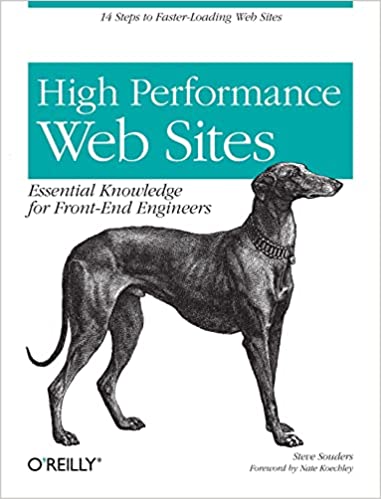
What this means is he’s toxic. He has so many malware-infected sites linking to him, porn sites, spam sites, and sites in really dodgy neighborhoods linking to him that it’s dragging down his reputation. So how do you fix this? It’s a lot of work. It’s not just a 10-minute job of creating a disavow file with those spammy sites and uploading it to Google Search Console.
Google makes you jump through many more hoops to let you back in its good graces. First, you have to show your mea culpa that you’re going to clean up your act. You might say, “well, I didn’t do it. It was the competitor, some affiliate, or somebody. They targeted me with negative SEO.”
That might be true, but Google treats you as guilty until proven innocent. You need to show that you’re not going to do that nasty, low-quality link building anymore by reaching out to these webmasters of the spammy sites and demanding that they remove the link. It’s a lot of work and involves multiple tools, not just link detox. I’d recommend using Pitchbox as well. Again, it’s a lot of work.
It’s necessary if you have that problem, and many of you do. I didn’t run link detox on all your sites, but I saw many of your sites had much lower trust than importance. That caused me concern because that often happens when you have toxic links.
This example here is focusonforce.com. We have 23 out of 100 in trust flow and 34 citation flow. Not as bad of a skewing towards less trust than importance, but it needs to be addressed. This one is New Heights, Media, 5 out of 100 in trust flow, 14 out of 100 in citation flow.
Did you see how many sites this newheightsmedia.com.au has? I’ll give you a hint. It’s right there. In number three. Three sites. It’s impossible. Not just hard but impossible to rank for anything meaningful if only three sites on the internet are willing to link to you.
Good keywords are popular, relevant, and attainable. It is important because it connects a user with what they may be searching for and the information a business provides about its products, services, benefits and promises. Share on XHow do you get these freaking amazing links? Well, you have to fish with bait, specifically link bait. It needs to be so remarkable. You got a whole presentation earlier about content marketing. You need to do effective content marketing.
This is an example that doesn’t come from me. This is a friend in the industry many of you have heard of, but I’m not going to name him because he likes cutting corners. He paid a relative to go to school for him, to go to college and get the degree in his name. What he did with this is, for his client, lifeinsure.com, he found The 19 Things you Probably Didn’t Know about Death. He lopped off one of the items, paraphrased the rest, and then posted it to their website.
Here’s where the magic came in. He had power user accounts on Digg. Digg was the Reddit back in the day. Once he got this article on the first page of Digg, it got tons of traffic and links, and his client went from nowhere for life insurance to page one. It wasn’t this article. It was the homepage. So Google, Bing, and Yahoo ranked him on page one. This tiny little insurance brokerage with fewer than a dozen employees for years for the term life insurance right up there with Geico, State Farm, and MetLife.
One of the secrets is the remarkable Purple Cow-type content. Another one is the power users. In this case, a Digg power user, but that’s no longer relevant because Digg is not relevant anymore. Reddit, on the other hand, is super relevant. It’s the front page of the internet.
I have a power user who works for me and is in the Century Club. Does anyone know what the main metric is for your authoritativeness on Reddit? Who said Karma? You get a book.
Awesome. Post karma and comment karma. The one that matters the most is post-karma. She’s in the Century Club, meaning she has over 100,000 post-karma points. She’s a major influencer on Reddit. Guess how I found her.
It’s a goldmine if you know how to write amazing ads.
Craigslist. I found her on Craigslist. Pretty incredible. I found Pinterest power users on Craigslist. I found amazing people on Craigslist, viral content writers. It’s a goldmine if you know how to write amazing ads. I put riddles on them and all sorts of crazy stuff.
Get these power users on your payroll or bribe them with gifts, shower them with praise, and so forth—it’s called ego bait—and get them to do stuff for you. This is an example from a past client, overnightprints.com.
Has anyone heard of ShoeMoney, Jeremy Schoemaker? A big internet celebrity and internet marketer, famous for holding up a six-figure check from Google way back in the early days of AdSense.
I knew that he didn’t love his business card. I knew he loved his logo, a Superman logo with a dollar sign. He’s got it in the bottom of his pool and everything, but he didn’t love his business card, just his logo.
I came to him with this idea that I dreamed up for my client Overnight Prints, which prints business cards, letterhead, and stationery, saying, ‘what if we ran a contest to design you a new business card, like an amazing one, and you help me promote it.’ We run it on your blog, but the contest itself lives on overnightprints.com. He’s like, “I’m in. This sounds great.”
He promoted it on his YouTube channel, blog, et cetera. My client went from nowhere for business cards, like sub-page 10, their primary money keyword, after that to number two. Booyah. There’s the evidence. This is an old campaign, but they have stayed there for years. It’s a quick case study that’s relevant today.
Another client in the room, Amino Active. Amino Active, Max’s, and Maxine’s are brands of supplements for bodybuilders. This is a regular staple content on their site, a blog post. That’s not bad, but it’s like meat and potatoes. It will not be the viral content you need to spread far and wide.
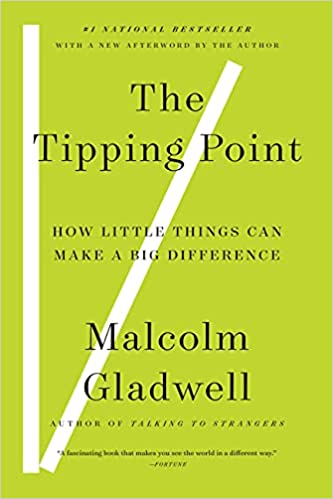
It has a cute headline. Grass-fed versus grain-fed is the better way. That’s cute, but it doesn’t have the magic, the remarkability, or the Purple Cow factor. If you scroll, you’ll see it’s just a lot of text with no images.
Now, here’s a piece that my content team has produced. John did a fabulous job. I created a whole link-building strategy with dozens of these ideas here. One is The 10 Worst Workout Fads of All Time, which sounds pretty smart. But then you start digging into the content and think, “wow, this is genius.” So that’s the shake weight.
If you read the pros, we don’t have time to, but it’s awesome. This guy is an incredible writer. Next and finally, okay, there’s supposed to be three. Keywords are supposed to be popular, relevant, and attainable. So those are the three key factors to make a good keyword, and then there are the wrong keywords.
Here’s an example from your part of the world. Westpac was a client for a while back in the day, and their legal department insisted they don’t use the term ‘mortgage’ anywhere on the website. Genius, right? The legal department equals the business prevention department. So without being able to use the term mortgage, they had to use the term ‘home loan’, but nobody searches for home loans. Nobody. It’s crickets. It’s nothing. That’s not good.
Then we have another example here, from Kohl’s department stores in the States, another client who insisted on ranking for ‘kitchen electrics’, but kitchen electrics is not something that anybody ever uses in their common vernacular. I do know what a kitchen electric is now, but who knows what a kitchen electric is? Yeah, exactly. It’s a small kitchen appliance like a toaster or a food processor.
Everybody’s searching for kitchen appliances, and you guys are doing the same thing. I’m not sure what a stargazer is. It could be a star blazer, a superstar, or a shooting star, but you probably don’t want those searchers who are searching for those things, even if they are searching. So the volumes would be small.
Then we have doorway pages. That happens if you’re trying to target a keyword and don’t have any unique content, so you replicate the same content. It’s duplicate content. It’s not a valuable page.

Where are Endurance Treadmills? So you have treadmills for sale. What is this targeting? Treadmills for sale in Adelaide. They have treadmills for sale in Brisbane and Canberra. And it’s all the same content. It goes on and on, all these different cities. They’re all linked from the footer sitewide.
That looks like spam. You’re probably getting penalized by Google. You got to stop it. Don’t do that. Now I’m going to show you, real quick, a few different tools. This is Soovle. This is such a cool tool.
Check this out. As you start typing your keystrokes, it will autocomplete. Watch, I’m going to start typing in SEO. It’s auto-completing not just from Google but also Bing, Yahoo, YouTube, Wikipedia, answers.com, and Amazon. These are all clickable, and they go directly to the search results of that particular search engine. Isn’t that awesome? This is great for keyword brainstorming.
Next, we have AnswerThePublic, which you’ve already heard about a couple of times, but here I’m going to show you how to use it. We’re going to type SEO into this tool. This guy starts getting impatient. He starts picking his teeth and stuff if you take too long. He’s like, “come on, guy, hurry up.’
All right, here we go. Guess where this data comes from for this particular tool. It’s Google Suggest.
This tool extracts all these Google suggestions: who, what, why, when, where, et cetera, implied questions. Things like prepositions and stuff—in, near, for, that sort of thing. And then, you can switch to the tab view. The graphical view is nice, but I don’t want to crank my head to see the results. So that’s a great free tool.
SEO is as important as a phone line. Online visibility is imperative if you want to grow your business and reach a wider audience. Share on XAnswerthepublic.com. You all should use it. You should check to ensure volume for these keywords, but it’s great fodder for FAQ pages. It got an issue with its FAQs page. They’re living on Help Scout instead of on the site. It’s like an error page.
Then we got Searchmetrics Topic Explorer. This one is an expensive tool but well worth it. It’s amazing. Watch how this one works. It creates these topic clusters, not just keywords, but actual topics.
Google refers to them as entities. But topics include multiple keywords. In this case, I put avocado in, giving me all these different related things like jackfruit, avocado toast, and everything. I can switch the views to see these by seasonality, competitiveness, and semantic associations. Isn’t that awesome? And they’re color-coded by those. So that is another great tool.
Then we have Google Trends, which is free. I mentioned it already when I showed you home loans versus mortgages. Let me show you how that works. You put your keywords separated by commas. In this case, I will compare a laptop and a laptops.
Look at that. The laptop singular is way more popular than the plural. You might think, “oh, I want to rank for laptops.” No, you don’t. You want to rank for a laptop. That’s where all the volume is.
Then there’s this kind of hidden feature hidden in plain sight that I love. It’s part of this tool. Here, let me show you. Under web search, one of the options is YouTube search. I don’t know of any other tool that gives you YouTube-specific search behavior other than YouTube suggests. Isn’t that awesome?
I can compare and contrast people’s behavior on YouTube, the number two search engine, versus Google. And then we have Moz Keyword Explorer. There are so many features in this that are amazing. Let me show you one real quick.
I’ll put SEO as the keyword, and then I’ll choose the option here: questions instead of the default, which is a mix of sources. So now, I’m getting questions similar to the AnswerThePublic tool. And then, SEMrush, this is the coup de grace right here.
You put in a competitor’s domain. In this case, I’ll put Moz.com, not a competitor. He’s a friend and co-author of the first two editions of The Art of SEO, Rand Fishkin. But I put in moz.com, then I go to the organic research tab, which shows he’s got hundreds of thousands of keywords or the company has hundreds of thousands. So it’s 200,000, and some keywords they rank in Google for.
Then I click on that link that says featured snippets. It filters to featured snippets only instead of all 200,000. So now I’m getting down to 9000 keywords where they have position zero. That’s what position zero looks like. It preempts the first organic listing, and that’s money right there.
You are the voice search answer if you can have a featured snippet. So if somebody says, okay, Google or hey, Google, tell me whatever, and you get an answer-back, and you’re the featured snippet, that’s your text from your website. Voice search is the future, and featured snippets are your gateway.
Here’s what you do. You go after your competitor’s featured snippets. First, you download them all like I just showed you, and then you identify the weak ones in the wrong format. It’s a how-to query, and they have a paragraph snippet.
The best format is a numbered list of how to boil an egg, 1, 2, 3. You see, your competitor has a paragraph. That is an incredible opportunity. EAT stands for expertise, authoritativeness, and trustworthiness.
I’m going to compare two doctors here. One doesn’t have it. This guy has a very pretty website with a nice-looking office, and there’s no credibility there.
The competition is just another doctor, but he’s a celebrity doctor or dentist. He’s got all these logos. He’s been on Extreme Makeover, on Larry King Live. He’s got a New York Times bestseller. This guy is the bomb, and he’s also got celebrity clients like Katie Perry. These sites need more EAT.
Thank you very much. There’s my email. Thank you. If you see me, I’m going to be around till tomorrow morning, and you want me to rip apart your website in a gentle way. I’ll sit down with you for about 10 or 15 minutes and take as many of you as you want. Just find me. I’ll be around. If we don’t have time, email me, and I’ll do it over Skype or Zoom. Thank you very much.
Thank you so much, Stephan. Impressive. I know how hard you worked on that presentation.
Yup.
You had to take your input and customize this presentation for this audience. The detail is appreciated. Thank you.
Thank you.
Important Links
Apps and Tools
Books
Businesses/Organizations
People
Previous Marketing Speak Episodes
Previous Get Yourself Optimized Episodes
YouTube Videos
Your Checklist of Actions to Take
- Take Stephan’s free SEO quiz to discover why my rankings are so low and get a free consultation on how I can fix my site errors.
- Use keyword brainstorming tools to get the necessary data to build my portfolio and for comparison purposes. Here are some great keyword brainstorming tools: Soovle, Ubersuggest, Google Trends, and AnswerThePublic.
- Create and share remarkable content. A noteworthy publication keeps the audience/readers engaged and compels them to like and share with their friends.
- Network my remarkable content. Reach out to influential websites and blogs to spread my content. Use tools like Majestic, linkresearchtools.com, or Ahrefs to identify the authority and trust of these websites.
- Be deliberate and picky on the sites I target. Some sites have toxic links, and that toxicity can be passed to me. Use a detoxing tool like Link Detox to find and remove all the toxic links.
- Focus on improving the quality and quantity of my links. Treat these links as PR for my business. The more they point to my site, the more Google deems my website or business worthy of a high ranking.
- Use hardcore SEO tools for real data and not just suggestions. Some great SEO tools are Google Keyword Planner, Moz, Rank Ranger, and SEMrush.
- Don’t take SEO information at face value. Google is not always 100% clear about everything that factors into SEO evaluation. Also, understand that SEO from two, three, or five years ago is entirely different than SEO today.
- Use the SEO BS Detector worksheet when hiring an SEO for my business. It has all these trick questions that I can use in the interview process
- Check out and read chapter 7 of The Art of SEO. This chapter teaches the fundamentals of SEO.







Leave a Reply